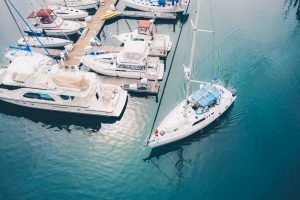The Importance of Maritime Connectivity: A Comprehensive Guide to Marine Antennas
Introduction
In the vast expanse of the open sea, staying connected is not just a matter of convenience—it’s a crucial aspect of safety, efficiency, and overall well-being. In this comprehensive guide, we’ll explore the importance of maritime connectivity and delve into the world of marine antennas. From navigating through treacherous waters to staying informed about the latest weather updates, marine antennas play a pivotal role in keeping vessels connected to the outside world.
Understanding Maritime Connectivity
Maritime connectivity encompasses a wide range of communication and information-sharing activities that take place at sea. Whether it’s communicating with other vessels, accessing weather forecasts, or streaming entertainment content, maintaining connectivity is essential for the smooth operation of maritime activities. In an ever-changing and often unpredictable environment, reliable communication can mean the difference between smooth sailing and disaster.

Title
The Role of Marine Antennas
At the heart of maritime connectivity are marine antennas—specially designed devices that capture and transmit signals to and from vessels. These antennas come in various shapes and sizes, each tailored to meet specific communication needs. From satellite TV antennas to VSAT antennas for high-speed internet access, marine antennas serve as the lifeline connecting vessels to the rest of the world.
Exploring Different Types of Marine Antennas
1. Satellite TV Antennas
Satellite TV antennas are designed to receive television signals from satellites orbiting the Earth. With their ability to capture signals from hundreds of channels, these antennas provide entertainment and information for passengers and crew members alike. Their weatherproof design ensures reliable performance even in the harshest maritime conditions.
2. VSAT Antennas
VSAT (Very Small Aperture Terminal) antennas are used for high-speed internet access and voice communication via satellite. These antennas offer fast and reliable connectivity, making them indispensable for maritime operations that require real-time data transmission and communication with shore-based personnel.
3. Directional and Omni-directional Antennas
Directional antennas are designed to receive signals from a specific direction, providing enhanced signal strength and clarity in areas with weak reception. On the other hand, omni-directional antennas can capture signals from all directions, making them ideal for vessels that frequently change course or operate in open waters.
Benefits of Maritime Connectivity
-
Safety: By providing access to real-time weather updates, navigational information, and emergency alerts, maritime connectivity enhances safety at sea and reduces the risk of accidents and emergencies.
-
Efficiency: Seamless communication allows for more efficient coordination of maritime activities, leading to improved operational efficiency and cost savings for vessel operators.
-
Well-being: Access to entertainment content and communication with loved ones ashore helps maintain morale and mental well-being among crew members during long voyages.
GRL Marine
In an increasingly interconnected world, maritime connectivity is more important than ever. From ensuring safety and efficiency to providing entertainment and peace of mind, marine antennas play a vital role in keeping vessels connected to the outside world. By investing in reliable communication technologies, vessel operators can navigate the seas with confidence, knowing that help is just a signal away.


